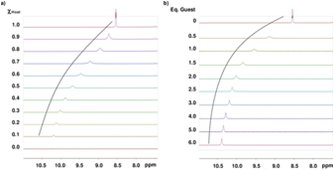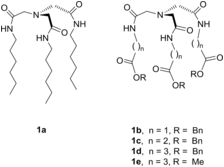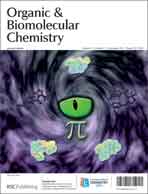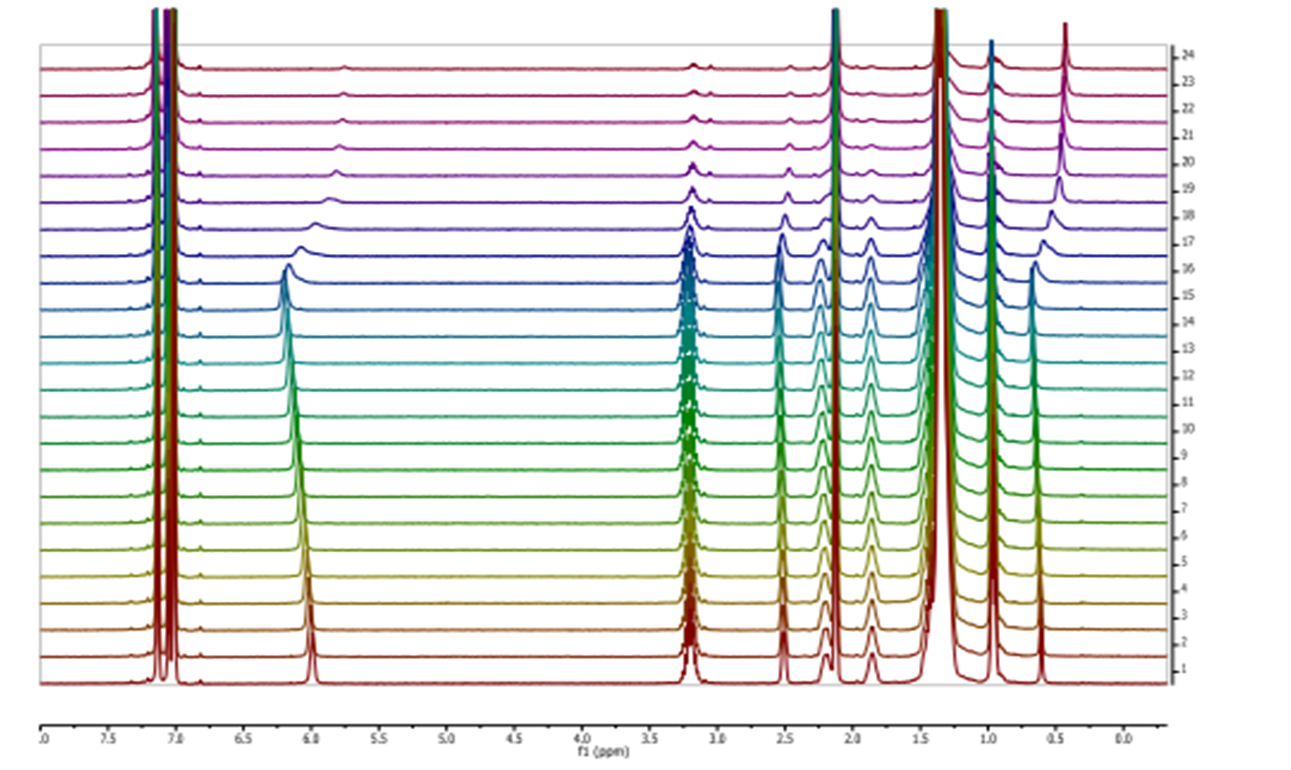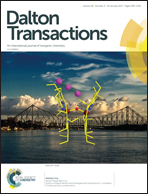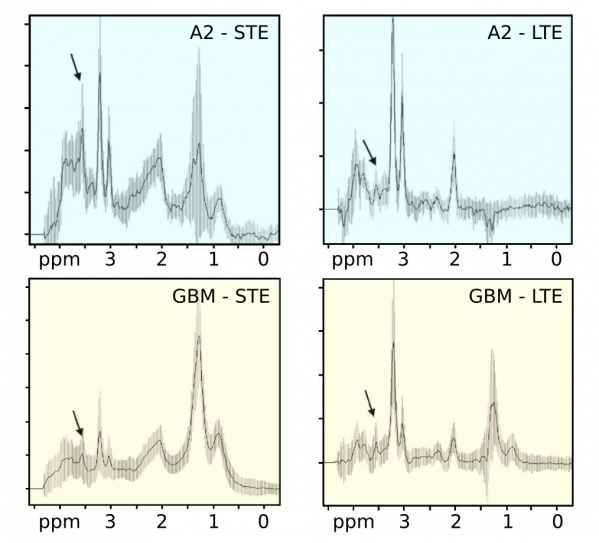-
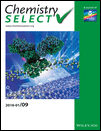 “Synthesis, Selectivity and Structural Study of New C3-Symmetric Tripodal Amides as Anion Receptors. An Experimental and Theoretical Approach”
“Synthesis, Selectivity and Structural Study of New C3-Symmetric Tripodal Amides as Anion Receptors. An Experimental and Theoretical Approach”Celis, S.; Pi-Boleda, B.; Nolis, P.; Illa, O.; Branchadell, V.; Ortuño, R. Chemistry Select. doi: 10.1002/slct.201600560
Several new nitrilotriacetic acid (NTA) based C3-symmetric tripodal amides have been synthesized. The NTA branches are alkyl chains or esters derived from amino acids of different length, namely glycine, β-alanine and γ-aminobutyric acid. The behavior of these compounds to entrap different monoanions has been tested revealing that they are good ligands able to form host-guest complexes with the following affinity order: H2PO4– > CH3CO2– > PhCO2– > Cl–, in DMSO. It was found that, while the end-group effect (CH3, methyl or benzyl ester) was irrelevant, the length of the branches played a role in the selectivity of the receptors considered and, in special, the glycine derivative has shown remarkably high recognition of H2PO4–. The 1:1 stoichiometry of the complexes has been experimentally determined based on NMR titration and justified by theoretical calculations that also allowed their structure to be predicted for selected instances. Otherwise, formation of bifluoride anion (HF2–) has been experimentally observed by NMR and this fact rends difficult the reliability of the affinity constants determined for fluoride complexes.
